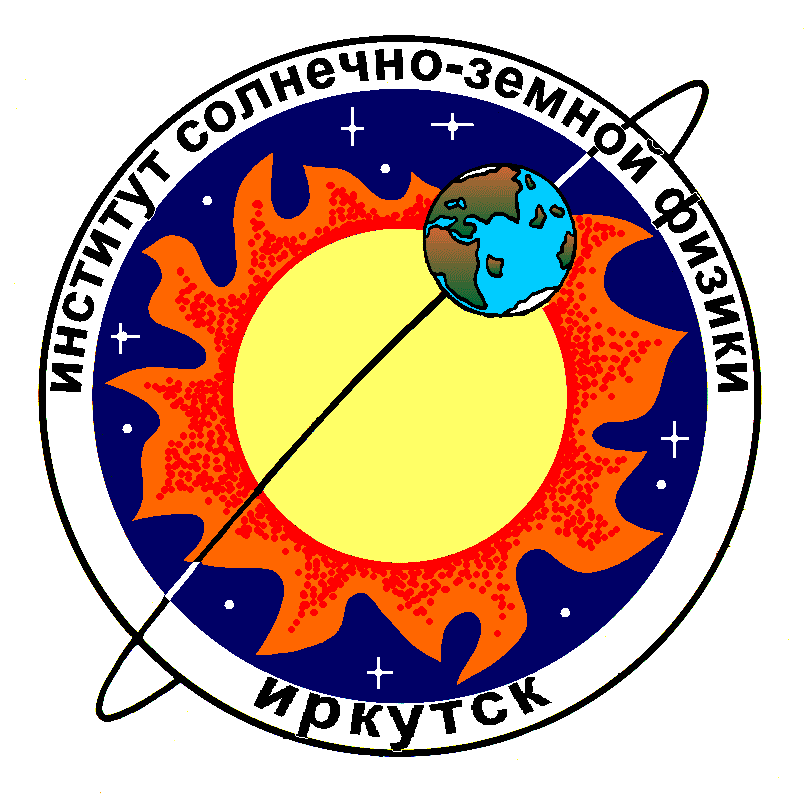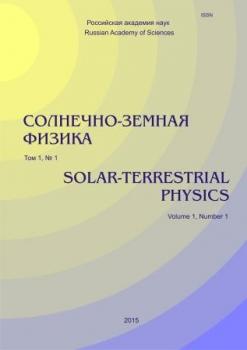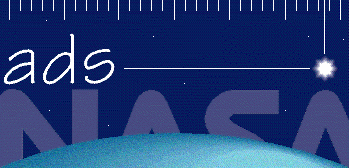Schmidt Institute of Physics of the Earth RAS
A.M. Obukhov Institute of Atmospheric Physics RAS
Moscow, Russian Federation
Moscow, Russian Federation
Space Research Institute RAS
Moscow, Russian Federation
Moscow, Russian Federation
Petropavlovsk-Kamchatsky, Russian Federation
Petropavlovsk-Kamchatsky, Russian Federation
UDC 53
We have examined the response of the lower and upper ionosphere to the passage of extratropical cyclones in 2014–2023, using measurements made at regional ultra-long-wave radio stations and satellites of the Swarm mission in the Far Eastern region of Russia. For twelve cyclones, we have found that disturbances in the lower ionosphere, observed in VLF signal amplitude and phase variations, as well as their associated electron density variations in the upper ionosphere during the active stage of the cyclones, correspond to the passage of atmospheric internal gravity waves and their dissipation, as evidenced by several examples. We have studied the mechanisms of the influence of internal atmospheric waves on the ionosphere, which make it possible to interpret the VLF signal phase variations observed in the lower ionosphere and the electron density variations in the upper ionosphere.
ultra-long-wave radio sounding, atmospheric internal gravity waves, extratropical cyclones, ionosphere
1. Akperov M.G., Bardin M.Yu., Volodin E.M., Golitsyn G.S., Mokhov I.I. Probability distributions for cyclones and anticyclones from the NCEP/NCAR reanalysis data and the INM RAS climate model. Izvestiya, Atmospheric and Oceanic Physics. 2007, vol. 43, no. 6, pp. 705–712. DOI:https://doi.org/10.1134/S00014338 07060047.
2. Bardin M.Yu., Polonsky A.B. North Atlantic Oscillation and synoptic variability in the European-Atlantic region in winter. Izvestiya, Atmospheric and Oceanic Physics. 2005, vol. 41, no. 2, pp. 127–136.
3. Bertin F., Testud J., Kersley L. Medium-scale gravity waves in the ionospheric F-region and their possible origin in weather disturbances. Planet. Space Sci. 1975, vol. 23, pp. 493–507.
4. Chernigovskaya M.A., Kurkin V.I., Orlov I.I., Sharkov E.A., Pokrovskaya I.V. Study of coupling of the ionospheric parameter short period variations in the North Eastern region of Russia with manifestation of tropical cyclones. Issledovanie Zemli iz kosmosa [Izvestiya. Atmospheric and Oceanic Physics]. 2010, no. 5, pp. 32–41. (In Russian).
5. Chernogor L.F. A tropical cyclone or typhoon as an element of the Earth–atmosphere–ionosphere–magnetosphere system: Theory, simulations, and observations. Remote Sens. 2023, vol. 15, iss. 20, 4919. DOI:https://doi.org/10.3390/rs15204919.
6. Chou M.Y., Lin C.H., Yue Jia, Tsai H.F., Sun Y.Y., Liu J.Y., Chen C.H. Concentric traveling ionosphere disturbances triggered by Super Typhoon Meranti (2016). Geophys. Res. Lett. 2017a, vol. 44, pp. 1219–1226. DOI:https://doi.org/10.1002/2016GL072205.
7. Chou M.Y., Lin C.H., Jia Yue, Chang L.C., Tsai H.F., Chen C.H. Medium-scale traveling ionospheric disturbances triggered by Super Typhoon Nepartak (2016). Geophys. Res. Lett. 2017b, vol. 44, pp. 7569–7577. DOI:https://doi.org/10.1002/2017GL073961.
8. Danilov A.D., Kazimirovskii E.S., Vergasova, G.V., Khachikyan G.Ya. Meteorologicheskie effekty v ionosphere [Meteorological Effects in the Ionosphere]. Leningrad, Gidrometeoizdat Publ., 1987, 267 p. (In Russian).
9. Das B., Sen A., Pal S., Haldar P.K. Response of the sub-ionospheric VLF signals to the super cyclonic storm Amphan: First observation from Indian subcontinent. J. Atmos. Solar-Terr. Phys. 2021, vol. 220, 105668. DOI:https://doi.org/10.1016/j.jastp.2021.105668.
10. Dyagilev R.A., Sdelnikova I.A. Unique large-scale research facilites “Seismic infrasound array for monitoring arctic cryolitozone and continuous seismic monitoring of the Russian Federation, neighbouring territories and the world”. Geodynamics and Tectonophysics. 2022, vol. 13, no. 2, 0591. DOI:https://doi.org/10.5800/GT-2022-13-2-0591. (In Russian).
11. Forbes J.M., Palo S.E., Zhang X. Variability of the ionosphere. J. Atmos. Solar-Terr. Phys. 2000, vol. 62, pp. 685–693. DOI:https://doi.org/10.1016/S1364-6826(00)00029-8.
12. Golitsyn G.S., Mokhov I.I., Akperov M.G., Bardin M.Yu. Distribution functions of probabilities of cyclones and anticyclones from 1952 to 2000: An instrument for the determination of global climate variations. Doklady Earth Sciences. 2007, vol. 413, no. 2, pp. 324–326. DOI: 10.1134/ S1028334X07020432.
13. Haldoupis C., Shalimov S. On the altitude dependence and role of zonal and meridional wind shears in the generation of E region metal ion layers. J. Atmos. Solar-Terr. Phys. 2021, vol. 214, 105537. DOI:https://doi.org/10.1016/j.jastp.2021.105537.
14. Kelley M.C. The Earth’s Ionosphere: Plasma Physics and Electrodynamics. Academic Press, 1989, 500 p.
15. Khromov S.P., Petrosyants M.A. Meteorologia i klimatologia [Meteorolovogy and Climatology]. Moscow, Nauka Publ., 2006, 582 p. (In Russian).
16. Kleimenova N.G., Kozyreva O.V., Rozhnoy A.A., Solov’eva M.S. Variations in the VLF signal parameters on the Australia–Kamchatka radio path during magnetic storms. Geomagnetism and Aeronomy. 2004, vol. 44, no. 3, pp. 354–361.
17. Lutgens F.K., Tarbuck E.J., Herman R.L. The Atmosphere. An Introduction to Meteorology. 14 Edition. New York, Pearson, 2018, 1912 p.
18. Medvedev A.V., Ratovsky K.G., Tolstikov M.V., Oinats A.V., Alsatkin S.S., Zherebtsov G.A. Relation of internal gravity wave anisotropy with neutral wind characteristics in the upper atmosphere. J. Geophys. Res.: Space Phys. 2017, vol. 122, pp. 7567–7580. DOI:https://doi.org/10.1002/2017JA024103.
19. Neu U., Akperov M.G., Bellenbaum N., Benestad R., Blender R., Caballero R., Cocozza A., Dacre H.F., et al. IMILAST: a community effort to intercompare extratropical cyclone detection and tracking algorithms. Bull. American Meteorological Soc. 2013, vol. 94, no. 4, pp. 529–547. DOI:https://doi.org/10.1175/BAMS-D-11-00154.1.
20. Olsen N., Friis-Christensen E., Floberghagen R., Alken P., Beggan C.D., Chulliat A., Doornbos E., et al. The Swarm Satellite Constellation Application and Research Facility (SCARF) and Swarm data products. Earth, Planets and Space. 2013, vol. 65, pp. 1189–1200.
21. Pal S., Sarkar Sh., Midya S.K., Mondal S.K., Hobara Y. Low-latitude VLF radio signal disturbances due to the extremely severe cyclone Fani of May 2019 and associated mesospheric response. J. Geophys. Res.: Space Phys. 2020. Vol. 125, iss. 5, e2019JA027288, 11 p. DOI:https://doi.org/10.1029/2019JA027288.
22. Polyakova A.S., Perevalova N.P. Investigation into impact of tropical cyclones on the ionosphere using GPS sounding and NCEP/NCAR reanalysis data. Adv. Space Res. 2011, vol. 48, iss. 7, pp. 1196–1210. DOI:https://doi.org/10.1016/j.asr.2011.06.014.
23. Rozhnoi A., Solovieva M., Levin B., Hayakawa M., Fedun V. Meteorological effects in the lower ionosphere as based on VLF/LF signal observations. Natural Hazards and Earth System Sciences. 2014, vol. 14, iss. 10, pp. 2671–2679. DOI:https://doi.org/10.5194/nhess-14-2671-2014.
24. Shalimov S.L., Solovieva M.S. Ionospheric response to the passage of typhoons observed by subionospheric VLF radio signals. Solar-Terrestrial Physics. 2022, vol. 8, iss. 3, pp. 51–57. DOI:https://doi.org/10.12737/stp-83202208.
25. Shalimov S.L., Zakharov V.I., Solov’eva M.S., Bulatova N.R., Korkina G.M., Sigachev P.K. Response of the ionosphere to strong tropospheric disturbances. Izvestiya. Atmospheric and Oceanic Physics. 2023a, vol. 59, pp. 1326–1336. DOI:https://doi.org/10.1134/S0001433823120216.
26. Shalimov S.L., Zakharov V.I., Solov’eva M.S., Sigachev P.K. Wave perturbations of the lower and upper ionosphere during the 2019 Faxai tropical typhoon. Geomagnetism and Aeronomy. 2023b, vol. 63, no. 2, pp. 186–196. DOI:https://doi.org/10.1134/S0016793222600576.
27. Shved G.M. Vvedenie v dinamiku i energetiku atmosfery [Introduction to the Dynamics and Energetics of the Atmosphere]. SPbU Publ., 2020, 396 p. (In Russian).
28. Simmonds I., Keay K. Extraordinary September Arctic sea ice reductions and their relationships with storm behavior over 1979–2008. Geophys. Res. Lett. 2009, vol. 36, no. 19, L19715, pp. 1–5. DOI:https://doi.org/10.1029/2009GL039810.
29. Ulbrich U., Leckebusch G.C., Grieger J., Schuster M., Akperov M., Bardin M.Yu., Feng Ya., Gulev S., et al. Are greenhouse gas signals of Northern Hemisphere winter extra-tropical cyclone activity dependent on the identification and tracking methodology? Meteorologische Zeitschrift. 2013, vol. 22, pp. 61–68. DOI:https://doi.org/10.1127/0941-2948/2013/0420.
30. Vadas S.L., Fritts D.C. Influence of solar variability on gravity wave structure and dissipation in the thermosphere from tropospheric convection. J. Geophys. Res. 2006, vol. 111, A10S12. DOI:https://doi.org/10.1029/2005JA011510.
31. Vanina-Dart L.B., Sharkov E.A. Main results of recent investigations into the physical mechanisms of the interaction of tropical cyclones and the ionosphere. Izvestiya, Atmospheric and Oceanic Physics. 2016, vol. 52, no. 9, pp. 1120–1157. DOI:https://doi.org/10.1134/S0001433816090279.
32. Vanina-Dart L.B., Pokrovskaya I.V., Sharkov E.A. Response of the lower equatorial ionosphere to string tropospheric disturbances. Geomagnetism and Aeronomy. 2008, vol. 48, no. 2, pp. 245–250. DOI:https://doi.org/10.1134/s001679320802014x.
33. Yasyukevich Yu.V., Edemskii I.K., Perevalova N.P., Polyakova A.S. Otklik ionosfery na gelio- i geofizicheskie vozmushchayushchie faktory po dannym GPS [Ionospheric Response to Helio- and Geophysical Disturbing Factors According to GPS Data]. Irkutsk, Irkutsk State University Publ., 2013, 160 p. (In Russian).
34. Zakharov V.I., Kunitsyn V.E. Regional features of atmospheric manifestations of tropical cyclones according to ground-based GPS network data. Geomagnetism and Aeronomy. 2012, vol. 52, no. 4, pp. 533–545. DOI:https://doi.org/10.1134/S001679321204016.
35. Zakharov V.I., Pilipenko V.A., Grushin V.A., Khamidullin A.F. Impact of typhoon Vongfong 2014 on the ionosphere and geomagnetic field according to SWARM satellite data: 1. Wave disturbances of ionospheric plasma. Solar-Terrestrial Physics. 2019, vol. 5, iss. 2, pp. 101–110. DOI:https://doi.org/10.12737/stp-52201914.
36. URL: https://ckp-rf.ru/usu/507436/ (accessed October 22, 2024).
37. URL: http://www.gsras.ru/unu (accessed October 22, 2024).
38. URL: http://ultramsk.com (accessed October 22, 2024).
39. URL: http://directory.eoportal.org/web/eoportal/satellite-missions/s/Swarm (accessed April 22, 2024).


















